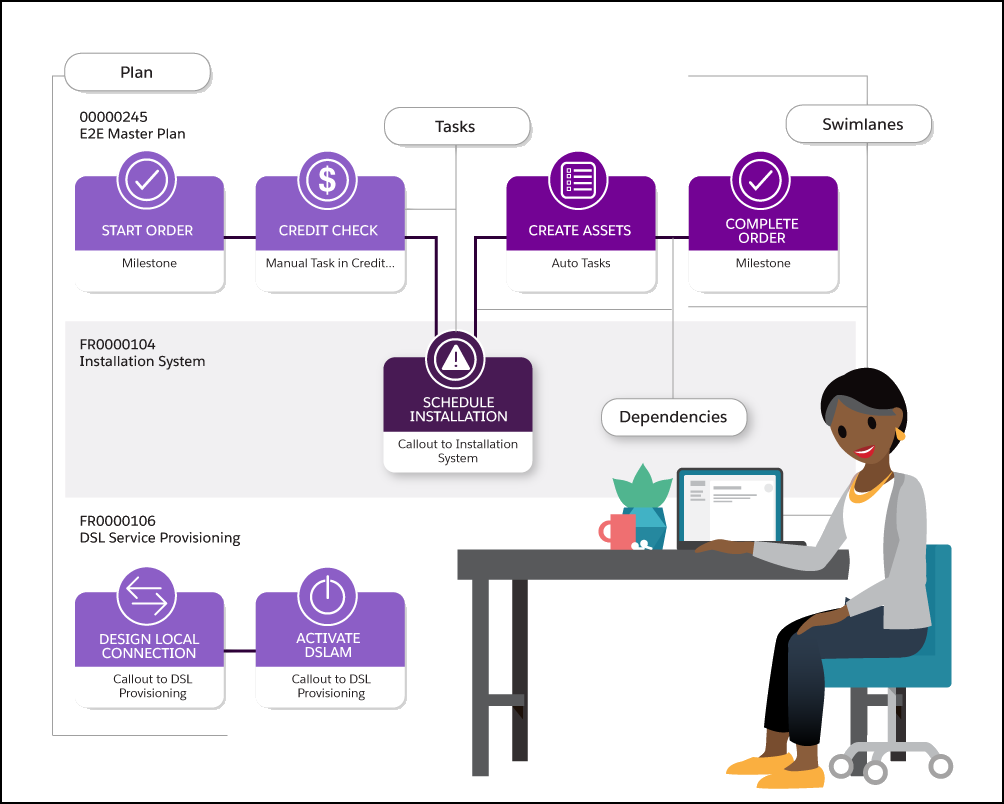Dive into Industries Order Management Orchestration
Learning Objectives
After completing this unit, you’ll be able to:
- Describe what an orchestration plan is.
- Explain how dynamic workflows streamline orchestration.
Anatomy of an Orchestration Plan
It’s time for Fulfillment Designer Greg to combine his technical skills with Angela’s business analyst skills and complete Infiwave’s deployment of Industries Order Management (OM) orchestration. Seeing that Angela is new to Infiwave, Greg updates her with the latest details. He’s already shared with her the basics of the Industries Shared Catalog, Industries CPQ, and Industries OM decomposition, so now it’s time to explain orchestration.
Industries OM orchestration is the culmination of the entire order fulfillment process. When it comes to orchestration, Angela still has a lot of questions: What’s an orchestration plan? What does it look like? When does it run? Greg decides to whiteboard a few diagrams to help illustrate orchestration plans in basic terms. They can go over additional details later.
Dynamic Workflows
Orchestration plans are dynamic and flexible. They are dynamically generated based on the order that’s captured in Industries CPQ and submitted to Industries OM for decomposition. In a production environment, after an order is decomposed, Industries OM dynamically generates an orchestration plan and then executes it.
An orchestration plan usually consists of multiple swimlanes, and each swimlane has one or more tasks grouped within it. Typically, there’s a swimlane for each fulfillment system, such as inventory, shipping, and billing. Tasks can depend on other tasks in the same swimlane or other swimlanes. For example, a shipping swimlane includes a task to ship out a router that depends on another inventory task that pulls the router from inventory. If the router is not in inventory, then you can’t ship it.

As another example, dispatching a technician to configure a router at the customer’s home depends on the customer receiving the router that was shipped. In this example, the series of tasks for a site installation swimlane depends on a task in a shipping and receiving swimlane.
In Industries OM, when you hover over a task in an orchestration plan, the segments that join the tasks it depends on and the segments that join the tasks that depend on it are highlighted. Another really cool thing about having an end-to-end visual of an orchestration plan is that each task’s status is color coded and updated in real time. Whether you are a fulfillment designer like Greg, a sales manager like Sophie, or an analyst like Angela, you can see the status of individual tasks in the plan. For example, completed tasks are green, pending tasks are gray, and failed tasks are red. You can see the overall orchestration plan’s status as well.
What’s Next
In this unit, you learned what an orchestration plan is and how dynamic workflows streamline orchestration in Industries OM. In the next unit, follow Angela as she explores types of orchestration tasks and statuses.